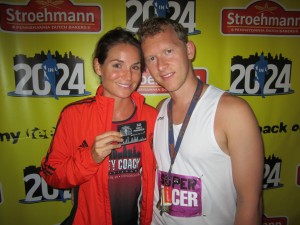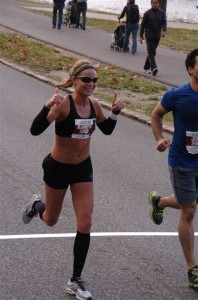 This week I’d like to talk about body image. While many of my clients are driven by race-day goals, PRs, and breaking through their athletic barriers, I have some clients who are also driven by toning up, feeling confident in their skin, and sometimes simply dropping pounds – ranging from 10lbs. to 50lbs. While I absolutely love helping my clients with their goals, sometimes my heart breaks for those who they compare themselves to or how bad they feel about themselves. Having a client want to lose 15lbs. by next week is like having a new runner expect they can race a 5K tomorrow – it’s unrealistic. Not to say those goals aren’t achievable, they may absolutely be, but tomorrow. Change takes time.
This week I’d like to talk about body image. While many of my clients are driven by race-day goals, PRs, and breaking through their athletic barriers, I have some clients who are also driven by toning up, feeling confident in their skin, and sometimes simply dropping pounds – ranging from 10lbs. to 50lbs. While I absolutely love helping my clients with their goals, sometimes my heart breaks for those who they compare themselves to or how bad they feel about themselves. Having a client want to lose 15lbs. by next week is like having a new runner expect they can race a 5K tomorrow – it’s unrealistic. Not to say those goals aren’t achievable, they may absolutely be, but tomorrow. Change takes time.
I am a firm believer that everyone deserves to feel good in their own skin – and is capable of achieving that. For some of us, it takes longer than others. One thing that often sabotages folks is their expectations. And who can blame them – we are bombarded by “standards” every single day. Thanks to Hollywood’s standards, our concept of beauty, aging, and fitness are completely unrealistic. Courteney Cox, Marisa Tomei, Sandra Bullock, Demi Moore – do these look like 50-year-old women in your life? Nope. Not unless you live in Miami or LA. Yet that’s a standard thrown upon us and one we assume upon ourselves. We are dooming ourselves to fail.
Personally, my self-esteem finally changed when I stopped reading tabloid magazines and watching Hollywood-related news. I couldn’t let go of the images I’d see, and the “secret diet” of some star. Or watching celebrity after celebrity in interviews or on the red carpet credit their genetics and a healthy lifestyle for their appearance. I call bullshit. They should be thanking the folks truly responsible for their appearance: their personal trainers, nutritionists and chefs, makeup and hair stylists, dermatologists and cosmetic surgeons. I don’t doubt some have good genetics, but good genetics alone aren’t responsible for most of what we see – or are told we should try to attain.
So if you are struggling with your goals and your self-esteem, please be kind to yourself. We cannot change Hollywood standards, but we can change our expectations of ourselves. Compare yourself to you, and no one else. Mark your progress by you and your starting point, no one else’s. Once you let go of all that pressure, success is that much closer.







